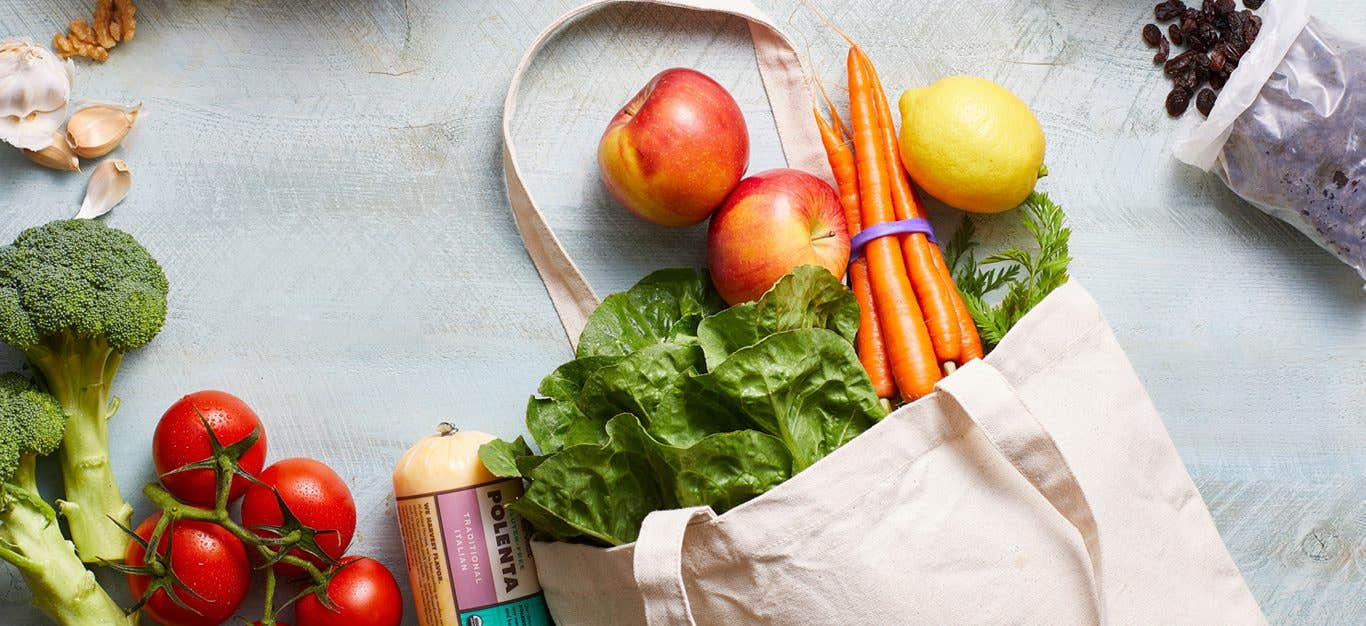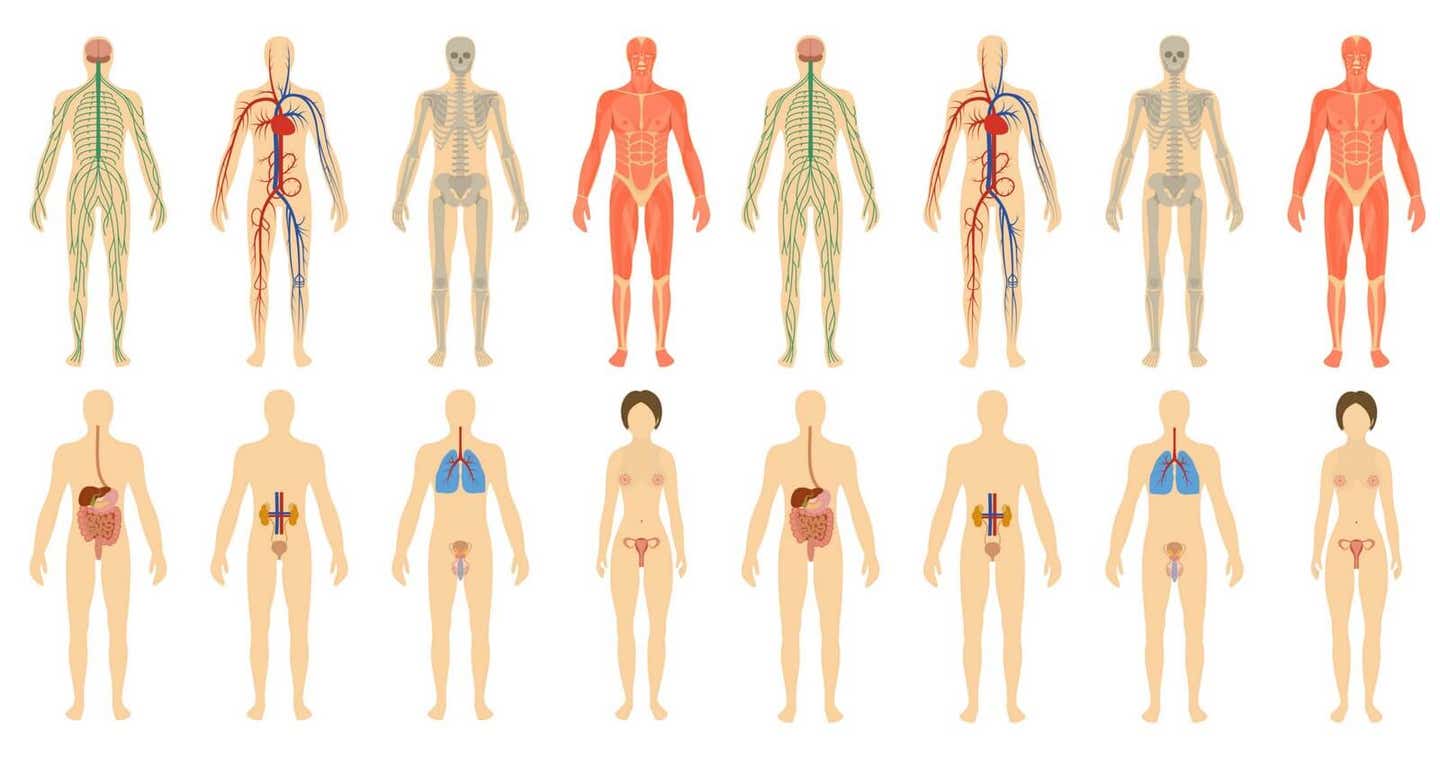By Micaela Karlsen, PhD, MSPH,
Last Updated:While about three-fourths of Americans might use the Nutrition Facts panel at least some of the time, most people have only a limited understanding of what it means when reading nutrition labels. Use this guide to separate fact from fiction at the grocery store.
1. Focus on foods without labels.
Let’s get this out of the way right now: Our goal is not to eat a lot of foods that require packaging or labels.
Picture your refrigerator full of green kale, yellow lemons, red apples, and a rainbow array of fresh fruits and vegetables, and your pantry brimming with whole grains and red, yellow, orange, black, white, and brown legumes, potatoes, sweet potatoes, and a sampling of nuts and seeds.
Most of these items can be purchased without packaging (unless the package just functions to hold a single ingredient, like raisins or beans), because they are intact, whole natural foods … and we want these to comprise the bulk of our diet. However, there are a variety of prepared and lightly processed foods that make eating a whole-food, plant-based diet a lot easier to maintain—for example, whole-grain products like crackers, wraps, and pizza crusts; canned products like beans, tomato paste, and tomato sauce; boxed products like plant milks, and of course frozen fruits and vegetables.
2. Don’t believe anything you read on the front of a package.
Food packages tend to be plastered with bold, exciting, and mostly meaningless, unregulated assertions. Rule number one, as registered dietitian Jeff Novick likes to say, is “don’t believe anything you read on the front of a package.” In other words, be wary of deceptive marketing hype that makes junk foods appear healthy.
The Food and Drug Administration (FDA) is the regulatory body that sets the standards for health claims on food packages and labels. However, the FDA’s ability to regulate unfounded claims is severely limited, both legally and practically, due to limited resources for investigation and enforcement.
(For those of you who want a more detailed explanation of food packing claims, see my breakdown below.)
3. Read the ingredient list.
Reading the ingredient list is key. Aim for shorter ingredient lists with recognizable ingredients, and watch out for words ending “ose.” That signifies the substance is a sugar. Ingredients are listed in order of descending volume, so if you see wheat flour first followed by glucose, high-fructose corn syrup, and maltose, it’s likely the total sugar from those three (by weight) adds up to more than the amount of flour.
In addition, don’t fall for any promises that a flour is made from whole grains unless the ingredient listed is “100% whole wheat flour” or “100% whole grain spelt flour,” or the like.
4. Check the Nutrition Facts panel.
Now you can move on to the Nutrition Facts panel—something to always check! Here’s an overview of what’s important:
Fat
Although the Nutrition Facts label no longer includes calories from fat, you can find that out yourself with a few calculations. A gram of fat equals 9 calories, so first multiply the total grams of fat by nine. Divide that number by the total calories. Multiply the result by 100 to find the percentage. Aim for the fat calories to be 15% of total calories or less (so that’s fat calories/total calories < 0.15). Doing this calculation will steer you toward foods that have little to no added fats and oils.
Cholesterol
Next, note the cholesterol count. Plant foods don’t contain cholesterol, so if you see anything greater than “0” next to cholesterol, that’s a clue to reread the ingredient list and check for hidden animal products.
Sodium
The USDA has set 2,300 mg as the upper safe limit for daily sodium intake. If you eat only meals like the ones on our recipe pages, with almost no added salt, you’ll still easily get adequate sodium from whole plant foods. So if you eat any packaged or prepared foods, keeping to the 2,300 mg limit (or better yet, 1,500 mg) is possible only by eating foods that contain very little to no added sodium. Jeff Novick’s handy trick is to make sure the milligrams of sodium don’t exceed the calories per serving.
Sugar
Finally, take a look at the sugars. Remember that whole plant foods will contain some naturally occurring sugar (which, unlike highly processed sugar, comes packaged with fiber and other nutrients). However, you'll want to avoid products that have a significant amount of sugar added. The new Nutrition Facts label, which completed its rollout in January 2021, discloses the amount of added sugars in a given product, making it easier than ever to check for this.
2 Nutrition Facts Elements Not to Worry About
Protein: Don’t worry about the protein! If you eat a whole-food, plant-based diet, you will naturally get all the protein you need, without having to think about it.
Daily Values: The amount of any particular nutrient that we absorb and metabolize can vary widely from person to person and time to time, based on a multitude of factors, including our need at that moment, and what else we eat at the same time, At best, food labels provide ballpark estimates of nutrient content, given the poor quality assurance, inadequate sample sizes, and lack of evaluation standards common in the industry. Another reason not to get too excited about using the Daily Values is that they were calculated only for adults and haven't actually been updated in decades.
How to Decipher Food Packaging Claims
There are three types of potentially misleading packaging claims: health claims, structure/function claims, and nutrient claims. The FDA is the regulatory body that sets the standards for these claims. However, the FDA’s ability to regulate unfounded claims is severely limited, both legally and practically, due to limited resources for investigation and enforcement.
Health Claims and Structure/Function Claims
To most consumers, all three types of claims look pretty similar, particularly the first two. Here are the technical descriptions of both:
- Health claim: Includes an evidence-backed statement relating a food or food component to a disease or health outcome. These claims have to be reviewed and evaluated by the FDA prior to use.
- Structure/function claim: Describes the effect that a “substance” (rather than a nutrient or food) has in affecting the normal structure or function in the body, without making reference to a disease. No evidence review from the FDA is required; the manufacturer merely has to submit a letter declaring its intent to use the claim and include the disclaimer “This statement has not been evaluated by the FDA” on its packaging. Here are some examples of each kind—can you easily tell them apart? Verbs like “support,” “maintain,” and “boost” are often used in structure/function claims.
| Health Claims | Structure/Function Claim |
| Lowers cholesterol | Helps maintain normal cholesterol levels |
| Reduces risk of osteoporosis | Helps build strong bones |
| Reduces risk of urinary tract infections | Helps maintain urinary tract health |
Nutrient Claims
The third kind of claim, a nutrient claim, makes a statement about the nutrient content of the food, and for example, may use the words “good” or “excellent.” Use of these two words is based on the daily values (DV) for each nutrient. For instance, a package can claim its contents to be a “good source of calcium” if one serving contains 10 to 19% of the daily value for calcium. An “excellent source” is defined as 20 percent or more of the daily value.
However, as discussed above, we don’t recommend trying to organize your diet around meeting recommended levels of particular nutrients.
The Bottom Line
Remember, the fewer packaged/labeled foods you eat the better. When buying packaged foods, don’t pay attention to words like natural, wholesome, and optimal—they don’t mean anything. Instead, focus on reading the ingredients list and the Nutrition Facts panel. Following these simple guidelines and finding your go-to brands will make healthy eating a whole lot easier. And know that the more you practice deciphering product packaging, the easier smart shopping will be.
To learn more about a whole-food, plant-based diet, visit our Plant-Based Primer. For meal-planning support, check out Forks Meal Planner, FOK’s easy weekly meal-planning tool to keep you on a healthy plant-based path.

Related News
Get Our Best Price On The Forks Meal Planner

Forks Meal Planner takes the guess work out of making nutritious meals the whole family will enjoy.



